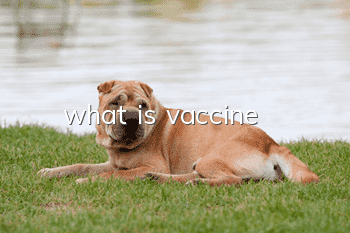what is vaccine

Biological products refer to preparations prepared from microorganisms or their toxins, enzymes, human or animal serum, cells, etc. for prevention, diagnosis and treatment. Biological products used for vaccination include vaccines, vaccines and toxoids. Among them, those made from bacteria are vaccines; those made from viruses, rickettsiae, and spirochetes are vaccines, sometimes collectively called vaccines.
Irish Terrier
1. Artificial active immune preparations
1. Killed vaccine
It is made by selecting bacteria, viruses, rickettsiae, spirochetes, etc. with good immunogenicity, artificially cultivating them, and then killing them with physical or chemical methods. This type of vaccine loses its ability to reproduce but retains its immunogenicity. Killed vaccines cannot grow and reproduce after entering the human body, and they stimulate the body for a short time. To obtain lasting immunity, repeated vaccinations are required.
2. Live vaccines
Use artificial directional mutation method, or select live microorganisms with weakened or basically non-virulent virulence from nature to make live vaccines or live attenuated vaccines. Commonly used live vaccines include Bacillus Calmette-Guérin (BCG), measles vaccine, polio vaccine, etc. After vaccination, it has the ability to grow and reproduce in the body, which is close to natural infection and can stimulate the body's long-lasting immunity to pathogens. Live vaccines require smaller doses and longer duration of immunity. Live vaccines are more effective than dead vaccines.
3. Subunit vaccine (component vaccine)
A vaccine made by removing the non-protective or even harmful components of the pathogen and retaining its effective immunogenic components. Chemical reagents can be used to cleave the influenza virus and extract its hemagglutinin and neuraminidase; subunit vaccines can be made from meningococcal capsular polysaccharide, etc.
4. Gene recombinant vaccine
It is made by applying genetic engineering technology, such as inserting the HBSAg gene into the yeast genome to make a genetically recombinant hepatitis B vaccine. Gene recombination methods can also produce more types of vaccines that are cheaper, safer and more effective or multivalent vaccines.
5. Toxoid
Extracellular toxins lose their toxicity after being treated with formaldehyde, but still retain immunogenicity and are toxoids. Add an appropriate amount of aluminum phosphate and aluminum hydroxide to form an adsorbed and refined toxoid. It is absorbed slowly in the body and can stimulate the body for a long time to produce higher titer antibodies and enhance the immune effect. Commonly used toxoids include diphtheria toxoid, tetanus toxoid, etc.
2. Passive immune preparations
1. Antitoxin
2. Antibacterial serum and disease resistancePoison serum
3. Gamma globulin
4. Specific immunoglobulins
5. Immune ribonucleic acid
6. Transfer factor
7. Thymosin
8. Interferon
Both artificial active immunity and artificial passive immunity can increase the body's disease resistance, but the latter has a short duration and is mainly used for treatment and emergency prevention.
- How to better train a Border Collie? A must-read for novices!
- A dog's increased appetite is not just for body growth, it may be sick itself!
- What should I do if my dog gets injured in a fight? Scratches and bites make a big difference
- The most painful time for male dogs after neutering surgery
- How to raise a Husky? Husky Breeding Guide!
- How is dog coronavirus transmitted?
- What to do if your dog vomits undigested food
- How much does a Jingtian Beast cost? Is it easy to raise? Appearance and characteristics of Jingtian Beast_Pictures
- Causes and solutions of pet tear stains
- Gastric tube administration



